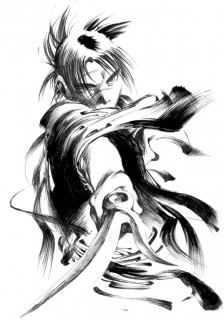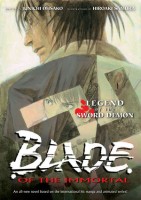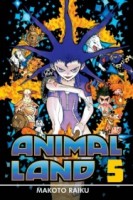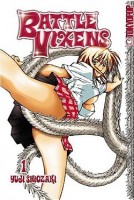 Hiroaki Samura’s Blade of the Immortal was one of the first manga that I ever read and it was the first series that I made a point of collecting. Even before I started writing at Experiments in Manga, I was reading and reviewing Blade of the Immortal. However, I wasn’t very consistent or timely with those reviews. And so, early in 2012, I began a monthly review project in which, beginning with the seventh volume, I would read and review one volume of Blade of the Immortal every month.
Hiroaki Samura’s Blade of the Immortal was one of the first manga that I ever read and it was the first series that I made a point of collecting. Even before I started writing at Experiments in Manga, I was reading and reviewing Blade of the Immortal. However, I wasn’t very consistent or timely with those reviews. And so, early in 2012, I began a monthly review project in which, beginning with the seventh volume, I would read and review one volume of Blade of the Immortal every month.
Nearly two years later, I have reached the twenty-seventh volume and my reviews have finally caught up with the English release of the series. I also plan on reviewing the new volumes of Blade of the Immortal as they are published. Assuming Dark Horse continues releasing Blade of the Immortal as it has been, there should be a total of thirty-one volumes in the English-language edition and we’ll see the end of the series in 2015.
Deliberately focusing on a single series month after month was an interesting experience and one that I enjoyed. I believe that it allowed me to see overarching plots and themes more clearly; it forced me to really look at what was going on and I noticed details that I might not have otherwise. Overall, I found it to be a valuable exercise in reviewing. So much so that I’ll soon be taking up a new monthly review project. I’m putting it up to a vote, too, so be on the lookout!
The links to all of my Blade of the Immortal reviews have been conveniently collected below, including the links to my reviews of Samura’s Blade of the Immortal artbook and the novel based on the manga written by Junichi Ohsako. (Some of the older reviews were written before I had read much manga and before I really knew what I was doing; I find them rather embarrassing, so please be forgiving.)
The Art of Blade of the Immortal
Blade of the Immortal: Legend of the Sword Demon
Blade of the Immortal, Volume 1: Blood of a Thousand
Blade of the Immortal, Volume 2: Cry of the Worm
Blade of the Immortal, Volume 3: Dreamsong
Blade of the Immortal, Volume 4: On Silent Wings
Blade of the Immortal, Volume 5: On Silent Wings II
Blade of the Immortal, Volume 6: Dark Shadows
Blade of the Immortal, Volume 7: Heart of Darkness
Blade of the Immortal, Volume 8: The Gathering
Blade of the Immortal, Volume 9: The Gathering, Part II
Blade of the Immortal, Volume 10: Secrets
Blade of the Immortal, Volume 11: Beasts
Blade of the Immortal, Volume 12: Autumn Frost
Blade of the Immortal, Volume 13: Mirror of the Soul
Blade of the Immortal, Volume 14: Last Blood
Blade of the Immortal, Volume 15: Trickster
Blade of the Immortal, Volume 16: Shortcut
Blade of the Immortal, Volume 17: On the Perfection of Anatomy
Blade of the Immortal, Volume 18: The Sparrow Net
Blade of the Immortal, Volume 19: Badger Hole
Blade of the Immortal, Volume 20: Demon Lair
Blade of the Immortal, Volume 21: Demon Lair II
Blade of the Immortal, Volume 22: Footsteps
Blade of the Immortal, Volume 23: Scarlet Swords
Blade of the Immortal, Volume 24: Massacre
Blade of the Immortal, Volume 25: Snowfall at Dawn
Blade of the Immortal, Volume 26: Blizzard
Blade of the Immortal, Volume 27: Mist on the Spider’s Web
Blade of the Immortal, Volume 28: Raining Chaos
Blade of the Immortal, Volume 29: Beyond Good and Evil
Blade of the Immortal, Volume 30: Vigilance
Blade of the Immortal, Volume 31: Final Curtain







